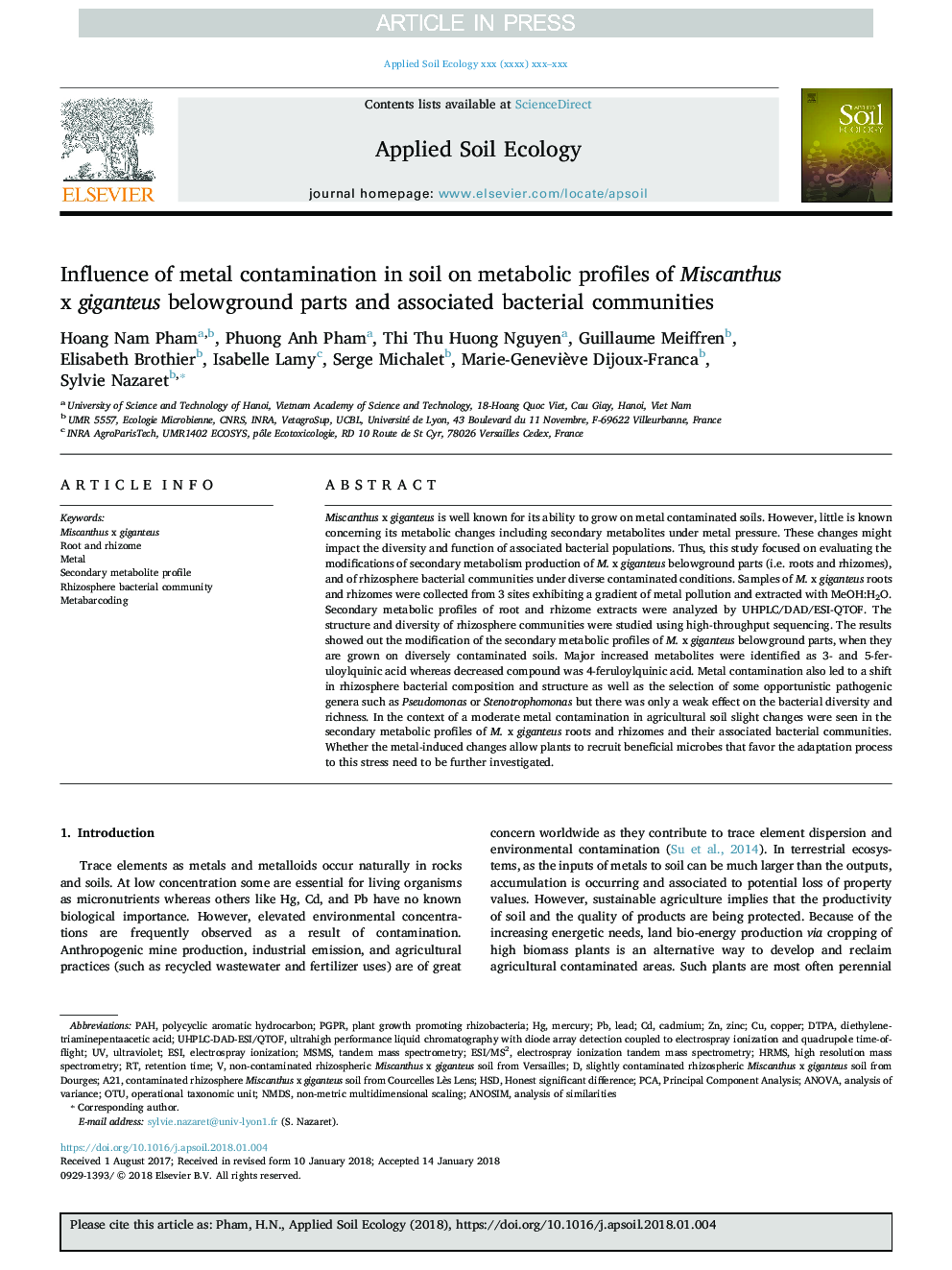| Article ID | Journal | Published Year | Pages | File Type |
|---|---|---|---|---|
| 8846729 | Applied Soil Ecology | 2018 | 10 Pages |
Abstract
Miscanthus x giganteus is well known for its ability to grow on metal contaminated soils. However, little is known concerning its metabolic changes including secondary metabolites under metal pressure. These changes might impact the diversity and function of associated bacterial populations. Thus, this study focused on evaluating the modifications of secondary metabolism production of M. x giganteus belowground parts (i.e. roots and rhizomes), and of rhizosphere bacterial communities under diverse contaminated conditions. Samples of M. x giganteus roots and rhizomes were collected from 3 sites exhibiting a gradient of metal pollution and extracted with MeOH:H2O. Secondary metabolic profiles of root and rhizome extracts were analyzed by UHPLC/DAD/ESI-QTOF. The structure and diversity of rhizosphere communities were studied using high-throughput sequencing. The results showed out the modification of the secondary metabolic profiles of M. x giganteus belowground parts, when they are grown on diversely contaminated soils. Major increased metabolites were identified as 3- and 5-feruloylquinic acid whereas decreased compound was 4-feruloylquinic acid. Metal contamination also led to a shift in rhizosphere bacterial composition and structure as well as the selection of some opportunistic pathogenic genera such as Pseudomonas or Stenotrophomonas but there was only a weak effect on the bacterial diversity and richness. In the context of a moderate metal contamination in agricultural soil slight changes were seen in the secondary metabolic profiles of M. x giganteus roots and rhizomes and their associated bacterial communities. Whether the metal-induced changes allow plants to recruit beneficial microbes that favor the adaptation process to this stress need to be further investigated.
Keywords
ANOSIMPGPRHSDMetabarcodingPAHNMDSESIHRMSMSMSMiscanthus x giganteusDTPAA21OTUPCAUltravioletanalysis of similaritiesPrincipal component analysisanalysis of varianceANOVARhizosphere bacterial communityMercuryDiethylenetriaminepentaacetic acidPlant growth promoting rhizobacteriaRetention timeLeadHonest significant differenceHigh resolution mass spectrometryTandem mass spectrometryElectrospray ionization tandem mass spectrometryZincMetalCoppernon-metric multidimensional scalingPolycyclic aromatic hydrocarbonoperational taxonomic unitCadmiumelectrospray ionization
Related Topics
Life Sciences
Agricultural and Biological Sciences
Ecology, Evolution, Behavior and Systematics
Authors
Hoang Nam Pham, Phuong Anh Pham, Thi Thu Huong Nguyen, Guillaume Meiffren, Elisabeth Brothier, Isabelle Lamy, Serge Michalet, Marie-Geneviève Dijoux-Franca, Sylvie Nazaret,
